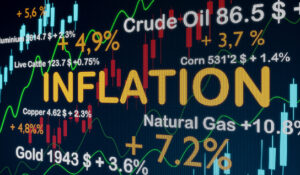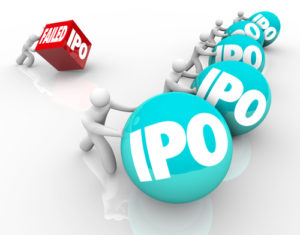
Including good stocks for long-term investment gains from the Resource section can be especially helpful in times of inflation. Learn more below.
For most investors, resource stocks should make up only a limited portion of their portfolios. That means that while we think you should maintain some exposure to resource stocks, you should still aim to balance your portfolio across most if not all of the five economic sectors.
If you want resource stocks in your diversified portfolio, then you need to know how to find good stocks in that sector for long-term investment gains.
Resource stocks, though volatile, tend to rise with inflation and can be good stocks for long-term investment gains
The resource sector is subject to wide and unpredictable swings in the prices it gets for its products. In the rising phase of the business cycle, when business is booming, resource demand expands faster than resource supply, so resource prices shoot up. This balloons profits at resource companies. When the economy slumps, resource prices fall, and this drags down resource profits and stock prices.
In addition to rising and falling with the business cycle, however, resource stocks have a history of rising along with long-term inflationary trends. This gives them a rare ability: they provide a hedge against inflation.
Back in the inflationary 1970s and 1980s, investors used to see this hedge-against-inflation ability as the main reason for buying resource stocks. But until recently, they rarely thought of it. That’s because inflation had waned for three decades.
Inflation peaked at a yearly rate around 13% in the early 1980s. It fell by two-thirds from that level by the middle of the decade. It went through a series of peaks and valleys, but had been working its way downward ever since.
However, after years of relative stability, inflation has come back to levels not seen in decades.
While the cost of just about everything has gone up, nobody can predict trends in inflation or interest rates with any consistency. And we disagree with investors who think we are on the verge of a huge outburst of never-ending price increases.
Even so, adding top Resource stocks to your portfolio lets prosper two ways: you can profit even without inflation — and these stocks will also provide an added boost in inflationary times.
It’s important to know your risk tolerance when investing in good stocks for long-term investment gains — including Resource stocks
There are several considerations that go into a successful growth investing strategy. Still, many investors overlook a number of important factors that can lower their risk.
In the end, there’s no such thing as risk-free investing. The tips below for lowering your growth investing strategy risk have long been part of the Successful Investor approach.
- Balance your cyclical risk
- Be skeptical of companies that mainly grow through acquisitions
- Don’t overindulge in aggressive investments
- Keep an eye out on a growth stock’s debt
- Keep stock market trends in perspective
- Look for growth stocks that have ownership of strong brand names and an impeccable reputation
- The best long-term growth stocks should have the ability to profit from secular trends
Meantime, we continue to recommend that you cut your risk in the volatile resource sector by investing mainly in stocks of profitable, well-established mining companies with high-quality reserves. And as mentioned, resource stocks (and this includes oil and gas, of course) should make up only a limited portion of your portfolio. Continue Reading…




